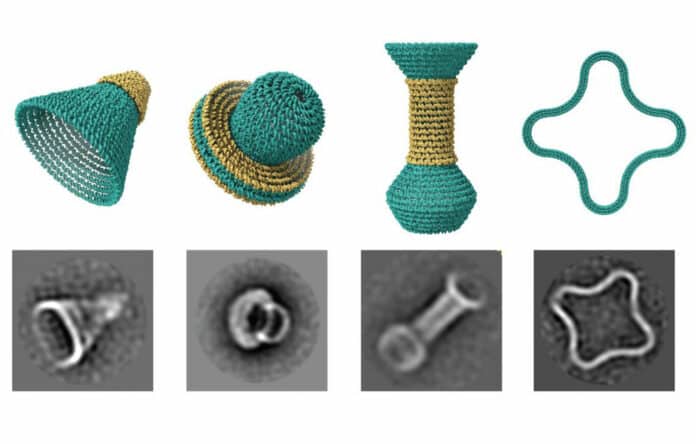DNA origami is an enticing technique for nanoscale design because of its simple and consistent design principles, from which it can produce self-assembling, spatially organized nanomaterials to study nanoscale phenomena.
Using threadlike molecules of DNA, scientists at Duke University and Arizona State University have created tiny rounded objects: itty-bitty vases, bowls, and hollow spheres, one hidden inside the other, like housewares for a Russian nesting doll. These objects can be bent and folded into complex three-dimensional objects with nanometer precision.
These creations demonstrate the possibilities of a new open-source software program. The software lets users take drawings or digital models of rounded shapes and turn them into 3D structures made of DNA.
Each tiny hollow object is no more than two-millionths of an inch across. More than 50,000 of them could fit on the head of a pin.
Scientists noted, “These are more than mere nano-sculptures. The software could allow us to create tiny containers to deliver drugs or molds for casting metal nanoparticles with specific shapes for solar cells, medical imaging, and other applications.”
DNA is the source code and building material in addition to being a genetic information carrier.
The genetic code of DNA consists of four “letters,” or bases, which couple up in our cells in a predictable manner to form the rungs of the DNA ladder. The scientists have appropriated DNA’s rigorous base-pairing requirements (A with T and C with G). They may “program” DNA strands to put themselves together into various shapes by creating DNA strands with particular shapes.
However, building structures with curved surfaces comparable to those seen in nature has been challenging. The team’s goal is to increase the variety of shapes that can be created using this technique.
To do that, scientists developed software called DNAxiS, which facilitates the design of curved, enclosed DNA origami nanostructures with axially symmetric geometry. It functions similarly to how clay coils create pots by coiling a long DNA double helix into concentric rings that stack on top of one another to form the object’s shape. The scientists also made it possible to reinforce the structures with extra layers for greater stability.
John H. Reif- A. Hollis Edens Distinguished Professor of Computer Science, Duke University- said, “Practical applications of their DNA design software in the lab or clinic may still be years away. But it’s a big step forward in automated design of novel three-dimensional structures.”
Journal Reference:
- Daniel Fu, Raghu Pradeep Narayanan et al. Automated Design of 3D DNA Origami With Non-Rasterized 2D Curvature. Science Advances, Dec. 23, 2022. DOI: 10.1126/sciadv.ade4455
